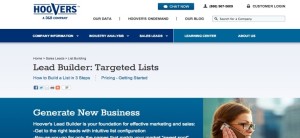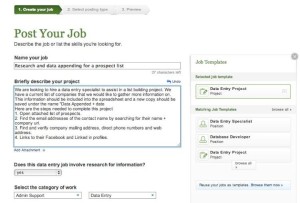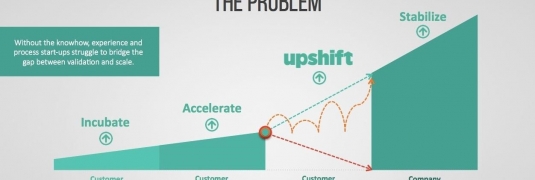Call me a streamlining savant or a financial alchemist, but when it comes down to it, let’s get real: I’m a hustler. Plain and simple.
I started my most recent company six years ago with four yellow notepads and four pens. We didn’t have a Rolodex of business contacts. Heck, we didn’t even have a computer. But it didn’t matter – what we lacked in experience and money we more than made up for in cojones. Our dream was to start a marketplace that would connect homeowners with contractors who would compete for work. But we weren’t even sure there was a market for it. So we started knocking on doors.
That isn’t a metaphor. We literally knocked on hundreds of doors in Marin County asking people if they needed work done to their houses, and if so, how much they would pay. On our first day we got 10 leads, and the second day 10 more. We looked in the Yellow Pages and shopped around those leads with contractors. Three contractors bought the same leads on the spot for $80 apiece — and there was our seed funding. We were off to the races with no website or even a name for the company. Today, Home Improvement Leads is on track to top $25 million in sales without ever having taken a cent of outside investment.
Scaling a sales-driven business isn’t easy, and — here’s the kicker — it doesn’t come naturally to a lot of company founders. But I learned the ropes, and over time I’ve developed the strategies, processes and tactics that are key to accelerated sales growth hacking techniques. I’ve also found through the experience of consulting with other start-ups that this can be replicated with a wide variety of business models.
In the most general sense, the most effective way to grow our company is to focus on things that produce the most substantial results for the least cost. It’s a tactic that we used to land some Fortune 500 clients when we were an an anonymous start-up without PR power, incubator funding, or bigwig connections.
Here’s how you can do the same for your business.
Step 1: Profiling
You likely already know about the 80/20 model as it applies to business. But as a refresher:
● 80% of your profits come from 20% of your customers
● 80% of your complaints come from 20% of your customers
● 80% of your profits come from 20% of your time spent
● 80% of your sales come from 20% of your products
● 80% of your sales are made by 20% of your sales staff
It’s pretty easy to deduce that your energies should be focused on catering to your most receptive target (read: the active 20%). This is where a founders energy is best spent. Lower performing customers, products or staff should be addressed cautiously.
For example: We had over 30 categories that we sold into. Awesome. But was it really worth it to be selling to a mom and pop business in rural Iowa? We took a hard look at what was really happening with our categories, territories, products, audience and team, and what we found dramatically improved profitability and cut out hundreds of wasted hours.
Here’s how we approached the project:
1. We took a sample of our top 100 clients and looked at:
● Years the company’s been in business
● Total revenue
● Location (ideally narrowed down to metropolitan location or even neighborhood)
● Industry
Then, we broke it all down into a spreadsheet. Even if Excel terrifies you, some simple tracking can help visually spotlight patterns you’d never thought of in the past.
2. We identified prime targets:
Drink caffeine (and potentially some beers) and spend the time to really dig into this next bit.
It’s OK, I’ll wait.
We found that an an abnormally large amount of revenue was coming from customers who were in one of the 25 largest metropolitan statistical areas (also known as MSA), and a very small amount of revenue was coming in from those that weren’t. I know this may sound obvious to many of you, but after years of heads-down hustling it’s easy to get caught up and not take time to really dig into these things. This means that, strategically speaking, we should have been targeting cities with high population density and close economic ties – places like Washington D.C. rather than Washington, Kansas (no offense, Kansas).

Note that the biggest MSAs were our best targets — but they might not be your best targets. It depends on your business. Regardless, if you’re curious to know the top MSAs in the U.S., this list is here. There are no real surprises (oh, hi, New York, L.A., Denver, Miami…), but it’s something to keep in the back of your head when reviewing your spreadsheets.
3. We extracted the secret sauce:
You’ve identified the 20% of customers that are accounting for the bulk of your revenue for a reason. That reason is to take a look at what they all have in common and determine the predictive factors of what makes a customer likely to spend more than others – the secret sauce.
In our case, those customers were window replacement contractors who covered at least ten counties, who had revenues of over $500 million, and who had been in business for over five years. Pretty darn specific. But essentially these were our marquee accounts. Some were even Fortune 250 companies. Once we unlocked the formula we just had to figure out a way to attack more customers with the same profile.
Note: if you’re targeting consumers, this model still applies. Just swap in factors like age, homeownership status, gender, race, or income instead of industry.
Take Away:
• Most people grasp the idea of the 80/20 rule but don’t actually profile the 20% of their customers that spend 80% of revenue. Consequently, they don’t have a structured way to prioritize getting more of those customers while de-prioritizing the ones that really don’t make much difference. The trick is finding these higher value customers and developing a strategy to replicate them.
• Then, you need to take time to really understand what makes them outliers by profiling them and also understanding who makes the decision.
Step 2: Find more of these customers!
We were focused on B2B sales, but the same tactics be adapted if your customers are consumers. Learning how to discover more of your ideal customers is an important step, but don’t get too hung up if you can’t find everything you want to know. You might start to see some trends even in very simple sets of information.
Here’s how we approached this from a B2B angle:
1. We built the list with borderline stalkerish tactics
First, we signed up for a free 30-day trial from Hoovers to access business records. We’d search for the names of the companies we wanted to work with, find the NAICS code (a coding system the government uses to classify businesses) they were listed under, then refine by company size and location (or any other criteria we found were predictive of their ability to be a large spender with us). That’s how we found similar companies with the same NAICS code.
Here are the steps we went through
A. 1. Got a 30 day Hoovers Trial
B. 2. Entered 5-10 names of companies that we identified as “dream customers” to see how they were categorized
C. 3. Found their NAICS codes so that we could expand our list
D. 4. Refined list by revenue size of the company
E. 5. Refined list by geography

2. We stalked.
Use elance.com and post a project like this

Now, remember how I said “borderline stalkerish”? I meant “full-on stalkerish.” Your Elance researcher is going to find all the decision makers from your target companies, their personal email addresses, business addresses, LinkedIn addresses, Facebook profiles with their personal email addresses and business addresses. Basically, everything short of where their parents and siblings live (unless they, too, are influencers, or they live with the decision maker, in which case get those contacts, too.)
True, Elance isn’t free. But it’s worth the (small) investment. I was willing to pay a premium of about $1.50 per name for such a small list where the customers were very valuable to us. If you’re doing a much larger and more generic list-building project you should expect to spend 5 to 10 cents per record.
3. We cross-checked.
We went on LinkedIn.com and ran a search for the peoples’ names to confirm that they were indeed the right people to talk to, cross-checking company names and titles. There’s no use in sending a thoughtfully personalized message (and its three follow-ups) to the wrong “David King.”
Take aways:
• There’s no need to try and build a “dream customer” contact list on your own with so many amazing outsourcing tools available. Elance is cheap.
• You’re going to want to find out as much information about your future points of contact at these “dream customers” as possible. Social media profiles are great for this (thanks, Internet!)
• Look for the people at the top of the organization if you’re in B2B.
Step 3: Design your dream customers an offer they can’t refuse
In order to create the perfect pitch to land the business we wanted, we spent a lot of time putting ourselves in our clients’ shoes. That meant sitting down and getting to know the challenges and opportunities they were facing. If the company was public, we read their annual investor reports, taking particular note of their discussions of strategies and major initiatives for the year. For non-public companies, we read industry trade publications to understand what they were going through.
Knowing their pain points and opportunity areas helped us shape our pitch and position our company as the one to work with. Why? Because we could educate them. Here’s what we did to land our dream clients, and how you can do it too:
1. We found out what keeps them up at night.
What are the major pain points that your potential customer has? What costs them significant time, money, or brand value? What trends and technologies might they be having trouble keeping up with? Do they lack visibility online? Are they being out-priced or outpaced by overseas companies? Has PETA made them a villain and they’re suffering from social media PR backlash?
In our case, we found our clients were classic brick-and-mortar businesses that didn’t have much experience online, and as a result they were struggling with the changes in marketing and advertising. So, to get their business, we offered them a simple training called “The top five ways to leverage new online methods to generate customers.” The bottom line: Figure out the target customer’s need, then figure out how you can be part of the solution.
2. We became experts.
You are going to need to describe, define and name the problem or challenge that your prospective customer faces — and you’re also going to have to be able to explain why your company’s product or service is the only viable solution. You can’t BS this. Start collecting data on the trends, technologies and issues that are key to understanding your prospective customers in a program like www.evernote.com. You can outsource this research on www.elance.com as well.
3. We designed a simple education program that we could provide them that addressed their pain
Companies respond well to education that will genuinely help them solve those pain points that you identified. If you are doing this online, I’ve found that this structure seemed to work the best for webinars.
Here are the basics for building the right kind of education narrative:
A. Open with a great promise. Think about a title or intro that’ll catch the CEO’s ear.
B. Outline areas covered. Address every step of your method. You’re pre-selling the education here. This is the tease phase that’ll get his/her attention.
C. Start with a little shock. Use some statistics that will catch people’s attention. Lists and charts work well.
D. Train on the trends, technologies or issues they face. This not only gives them confidence that you’re an expert in their industry, but shows that you know exactly what they’re talking about when you say you know how to fix their problem.
E. Show the company how you can turn issues into opportunities. Explain a few ways that they can take advantage of current trends, capitalize on these opportunities, and limit risk.
F. Go over the five things to look for. If they are looking for solutions to help them, this is where you can position your company. (“Your brick-and-mortar sales are being cannibalized by your online sales? Our team can help with that…”)
G. Hook them. At the end of the program, give them a simple offer to engage with your company. Resist going into pitch-mode; instead, go over the specific benefits you can offer them. Remember, this is about a reciprocal relationship, and right now you’re courting them. So it’s all. About. Them.
Take away:
• Focus on their needs and pains, not your sales pitch!
• Don’t pitch your business. This is an education designed to position you as an expert in the field.
• This is not a sales pitch. (Have I mentioned this yet?)
Step 4: Build a better mousetrap
Considering that the average email user receives 147 messages a day and deletes almost half of them, it was highly likely that if we simply started bombarding our prospective customers with emails, we’d be quickly shuttled into spam folders, co-mingling with offers of fake Rolexes and babe cams. Knowing this, we figured out a better way to get the decision-makers’ attention.
1. We wrote clever notes that were relevant to our educational offer.
An example: “Are you concerned that your online marketing efforts aren’t sticky enough? Call us and we will show you 5 ways that you can improve performance and lower costs.”
2. We found eye-catching small gifts that also tied into the education.
With the previous example, we included rubber sticky hands with our intro. Check out Oriental Trading Company for ideas (but maybe skip by the Hawaiian leis and novelty sunglasses).
3. We wrote a clever phone script for follow-up phone calls.
This script ties into your offer of education and the pain they might be feeling.
Tailor this script to your situation, but here’s the basic formula:
“Are you worried that online marketing efforts aren’t attracting the right customers? Call us today and we will give you a free education to show you five ways to make your marketing more sticky.”
4. We got it in the mail. Yes, the snail mail.
Assemble and package the first 10 letters with gifts, and get ready so that you can send out one per week over the course of 10 weeks. The reason to send them out once per week is that it will take time and multiple “touches” to get their attention. Make sure to send via priority mail (which has a better delivery and open rate).
Take away:
• Keep things simple and make sure that they aren’t just random crap. They have to be fun, useful and tie into your educational offer. Making the notes and gifts tie into the potential pain that the customer is facing (and into the educational offer you provide) is key.
• Be strategic with your time. Don’t call a dream customer three times in one day. Instead, use some calendaring skills and plan to make each prospective customer receive a phone call and a gift in the mail each week.
Step 5: Let the stalking begin
I knew from our early days of starting HomeImprovementleads.com that persistence pays off, so we created a plan to call these executives once a week, every single week until we signed them up… or pigs flew, whichever came first.
It takes an average of seven times for someone to hear about something before they take action (no, seriously – see the rule of 7), yet the average sales person gives up after 1.7-2.1 call attempts…
I figured that we needed to at least call them seven times, if not more… My own plight wasn’t always spectacularly easy, either (proof that being the Most Charming Person on EarthTM doesn’t always work with answering machines). It actually took me five weeks to get a call back.
We called and sent little gifts every week for a month without even talking to one contact. No one called us back or responded to our gifts, and my team was beginning to get a bit nervous. I kept reminding everyone of the Rule of 7 and that we had all committed to giving it our best, but as we continued to get no bites even I began to get a little anxious. That is, until the fifth week, when the CEO of a $3 billion company called me on my cell phone and said, “I’ve been getting your gifts in the mail and you’ve got my attention. How can you help me?” I practically jumped out of my shoes.
Things progressed with that client and we ended up working together. The next week I got another call. Two weeks later I got two more callbacks and two emails to set up meetings.
Our results at the end of 4 months:
30% of our total list of one hundred were contacted.
We had meetings with fifteen of the one hundred on the original list
We closed 2 major deals that equated to over $2,000,000 in revenue
We spent roughly $2,000 on gifts, postage and elance services.
Now, let’s talk contingency plans. Not everyone (dare I say few?) will answer your calls at first. You’ll have to navigate your way past barriers like receptionists, assistants, switchboard operators, answering machines – a barrage of bureaucracy that can kill your sale before it even happens. That is, unless you’re prepared. This is not a sprint…it’s a marathon. So be prepared accordingly.
Takeaways:
• Try not to be discouraged. This will take time, but you will get their attention if you keep at it. Promise.
• I’ve said this before, but seriously, this is for your own good: the goal of this is not to sell them, but rather to get their attention and position yourself as an expert. Then you offer to help them.
Now you have gold in your hands: a step-by-step account of how to take your business to the next level. But it’s worth nothing if you don’t act on it.
● Believe in your customers: the data will show you who to target.
● Believe in your product: your offer of education must be sold from the soul.
● Believe in yourself… so get started already!
Questions? Comments? Write them below!

















